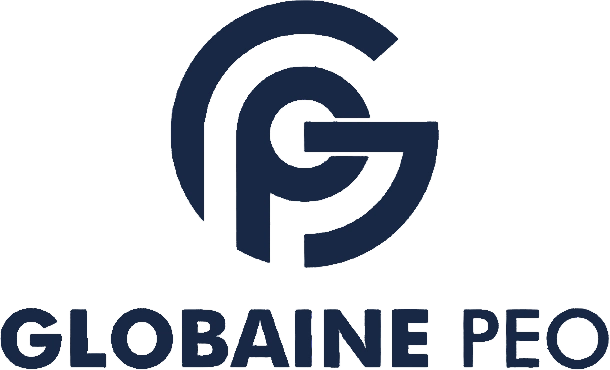Expanding into South Korea provides exciting growth opportunities for global companies. However, managing payroll in South Korea requires a solid understanding of local tax laws, social security contributions, and other payroll regulations. This guide covers essential aspects to help you set up and manage payroll in South Korea efficiently.
Step 1: Understanding Salary Structure in South Korea 
The salary structure in South Korea includes several mandatory and optional components to ensure compliance with national regulations and competitive compensation.
| Component | Details | Mandatory/Optional |
|---|---|---|
| Base Salary | The agreed-upon monthly salary, with a statutory minimum wage that varies by industry. | Mandatory |
| Overtime Pay | Paid at 1.5 times the hourly rate for hours worked beyond 40 hours per week for non-exempt employees. | Mandatory |
| National Pension System (NPS) | Employer contributions to the NPS for retirement benefits, applicable to all employees. | Mandatory |
| Health Insurance | Employers must contribute to the National Health Insurance (NHI) for all employees. | Mandatory |
| Bonuses | Performance-based or incentive bonuses, which may affect taxable income. | Optional |
| Allowances | Includes transport, meal, or housing allowances, typically subject to taxes. | Optional |
Outcome: Establishing a compliant salary structure in South Korea enhances employer reputation and supports employee satisfaction.
Step 2: Income Tax Withholding in South Korea 
South Korea employs a progressive tax system, requiring employers to withhold income tax from employees’ salaries and remit it to the National Tax Service (NTS).
| Taxable Income Bracket (KRW) | Tax Rate (%) |
|---|---|
| 0 – 12,000,000 | 6% |
| 12,000,001 – 46,000,000 | 15% |
| 46,000,001 – 88,000,000 | 24% |
| 88,000,001 – 150,000,000 | 35% |
| Above 150,000,000 | 38% |
Note: Foreign residents may have different tax rates or benefits based on Double Taxation Agreements (DTAs) with their home countries.
Outcome: Accurate tax withholding ensures compliance, preventing penalties.
Step 3: National Pension System (NPS) Contributions 
Employers contribute to the National Pension System for all employees, helping provide retirement benefits.
| Contribution Type | Employer Rate | Employee Rate |
|---|---|---|
| NPS (Standard) | 9% | 9% |
Outcome: Timely and accurate NPS contributions ensure employees receive full retirement benefits and prevent compliance issues.
Step 4: Payroll Cycle and Timing in South Korea 
Employers typically adhere to a monthly payroll cycle for salaried employees, though alternative cycles can be arranged based on business needs.
| Payroll Cycle | Description |
|---|---|
| Monthly | Standard for salaried employees, aligns with budgeting. |
| Bi-monthly | Used in specific industries, offering flexible payment. |
Outcome: Maintaining a consistent payroll cycle supports employee financial planning and ensures compliance with South Korean laws.
Step 5: Paid Leave and Public Holidays in South Korea 
South Korea provides various paid leave entitlements governed by the Labor Standards Act, along with a set of public holidays.
| Leave Type | Entitlement |
|---|---|
| Annual Leave | Minimum 15 days after 1 year of service, increasing with tenure. |
| Public Holidays | 16 recognized holidays per year; additional holidays may be employer-discretionary. |
| Sick Leave | Up to 11 days per year, with additional provisions for hospitalization. |
| Maternity Leave | 90 days for eligible employees, with government support available. |
| Paternity Leave | 10 days for eligible fathers, supported by government policies. |
Outcome: Proper leave management aligns with regulations and supports employee satisfaction.
Step 6: Managing Payroll for Foreign Employees in South Korea 
Foreign employees are generally subject to the same payroll and tax obligations, but specific considerations apply:
- Residency Status: Determines applicable tax rates and whether worldwide or local income is taxed.
- Work Visas: Required for lawful employment, including E-2, H-1, or D-8 visas.
- Double Taxation Agreements (DTAs): South Korea has DTAs with multiple countries, reducing tax burdens on foreign income.
Outcome: Careful management of foreign employees’ payroll ensures compliance and fosters positive working relations.
Step 7: Payroll Compliance and Reporting in South Korea 
Payroll compliance requires accurate and timely reporting to the National Tax Service (NTS) and adherence to national payroll regulations.
| Requirement | Frequency | Details |
|---|---|---|
| Income Tax Withholding | Monthly | Employers remit withheld taxes to NTS for all employees. |
| NPS Contributions | Monthly | NPS contributions must be deposited monthly for all employees. |
| Payroll Recordkeeping | Ongoing | Employers must retain payroll records for 5 years for audit purposes. |
Outcome: Meeting payroll compliance requirements ensures smooth operations and reduces the risk of legal complications.
Step 8: Social Security and Additional Contributions in South Korea 
The social security system in South Korea includes mandatory contributions from both employers and employees for various welfare needs.
| Contribution Type | Employer Responsibility | Employee Responsibility |
|---|---|---|
| National Health Insurance (NHI) | 3.335% (variable by income) | 3.335% (variable by income) |
| Employment Insurance | 0.9% (for workplace injuries) | 0.9% |
Outcome: Accurate social security contributions guarantee employee access to social benefits and legal compliance for employers.
Conclusion: How GlobainePEO Can Help with Payroll in South Korea
GlobainePEO specializes in managing all aspects of payroll in South Korea, from calculating and withholding taxes to ensuring timely social security and housing fund contributions. By partnering with GlobainePEO, you ensure full compliance with South Korea’s payroll regulations, streamline your payroll processes, and focus on expanding your business with confidence.

